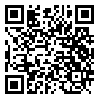Volume 7, Issue 4 (2-2021)
NBR 2021, 7(4): 374-380 |
Back to browse issues page
Department of Biology, Faculty of Sciences, University of Guilan, Rasht, Iran , mashayekhi@guilan.ac.ir
Abstract: (1794 Views)
Olig1 and Olig2, two transcription factors, play regulatory function in the differentiation and specification of oligodendrocyte progenitor cells (OPCs). In this study the effects of electromagnetic fields (EMF) on total protein concentration ( TPC ) and Olig1 and Olig2 expression in the cerebral cortex of mouse was examined. Twenty-one Balb/c mice were separated into three groups: control, EMF and Sham groups (n=7 for each group). The mice were placed inside the solenoid for a daily EMF exposure of 50 Hz, 1 mT for 6 h/day, 7 days/week for 10 days. The Sham group was also located in the same coil with no exposure. Mice were anesthetized after the final exposure session and their cerebral cortex were collected. TPC and the expression of Olig 1 and Olig2 were studied by Bio-Rad protein assay and western blot, respectively. The cerebral cortex samples were removed for further analysis. There was no significant difference in TPC in the EMF treated cortical samples as compared with those from the SHAM and control groups. It was also shown that the expression of Olig1 and Olig2 was increased in the EMF treated cortical extracts as compared with those in controls and SHAM groups. Therefore, it could be concluded that EMF enhances Olig1 and Olig2 expression in the mice cerebral cortex. Moreover, as Olig1 and Olig2 plays important role in the development of oligodendrocyte progenitor cells, it can be deduced that EMF may affect OPC differentiation by increasing the expression of Olig1 and Olig2. Further studies are needed to clarify the extent of EMF impact on oligodendrocyte differentiation.
Type of Study: Original Article |
Subject:
Animal Biology
Received: 2020/09/25 | Revised: 2021/03/16 | Accepted: 2020/11/16 | Published: 2021/03/16 | ePublished: 2021/03/16
Received: 2020/09/25 | Revised: 2021/03/16 | Accepted: 2020/11/16 | Published: 2021/03/16 | ePublished: 2021/03/16
| Rights and permissions | |
 | This work is licensed under a Creative Commons Attribution-NonCommercial 4.0 International License. |




